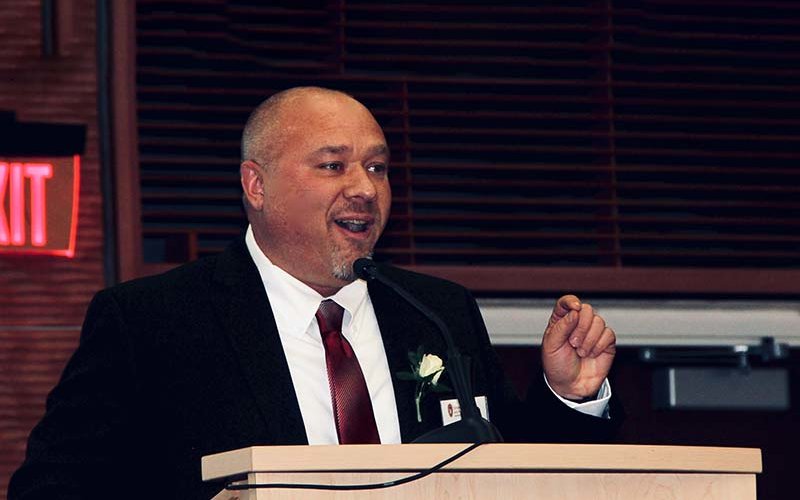
“It is a great time to study the First Amendment,” says media law scholar Jason Shepard, department chair and associate professor of communications at Cal State Fullerton.
Americans have greater rights to free expression than at any time in history, and the digital era has removed barriers to communication and unleashed boundless access to information. At the same time, the idea of “truth” is under attack, and Russia was able to use social media to influence the 2016 U.S. presidential election in ways we’re still learning about.
Shepard is wary about government censorship of false or hateful speech, however. “History reminds us that it is a slippery slope to give government more censorship power, even if the motives are good.” Better solutions than censorship, he says, include legislation requiring more transparency in online political advertising, for example.
“First Amendment scholars like me are often drawn to philosophers like John Milton, who argued that truth would ultimately prevail in the marketplace of ideas,” Shepard explains. “We also believe that the corruptive influences of government authoritarianism are worse than the abuses that come from too much individual freedom, at least in the realm of ideas and expression.
“While First Amendment law is largely speech-protective, it doesn’t protect everything,” he says. For repeatedly saying that the mass shooting at Sandy Hook Elementary was a hoax in ways that harmed the families of murdered children, right-wing talk show host Alex Jones is facing a number of libel lawsuits. Shepard thinks the families have a good shot at winning their cases.
Has the role of the First Amendment in communications changed as we’ve moved from print to digital media?
The First Amendment has enabled both the best and worst aspects of free expression in the digital era. The internet allows anyone to publish to a mass audience, and with that comes potential legal liability. So the First Amendment has become more relevant to anyone communicating.
What are some of the “things to watch” regarding the First Amendment and communications?
At least four areas are on my list:
- Social media companies are under pressure to monitor and censor hate content. Call for government intervention will raise legal challenges. Other social media law issues include attempts by politicians to block critics from their feeds. Courts are finding these platforms to be public forums, so politicians can’t do so.
- Invasions of privacy will create new legal challenges with how quickly things spread on the internet, and laws like Europe’s “right to be forgotten” (requiring internet search engines to honor European Union citizens’ requests to clear their personal search results) creating new privacy expectations.
- Conservatives are using free speech claims to push ideological ends in several areas. Deregulation of U.S. campaign finance laws pits the right of anonymous speech against the need for an informed electorate. Other cases pit religious freedom and free expression against anti-discrimination rights of LGBTQ individuals.
- Justice Clarence Thomas’s recent call to reconsider New York Times v. Sullivan, which established the framework of modern libel law, would be a game changer in First Amendment law.
What do you hope your expertise brings to communication students’ learning at CSUF?
I want future communications professionals to understand how the law can be an important tool for them and gain a deeper understanding of press freedom and the First Amendment. I want them to avoid libel and invasion of privacy legal troubles. “Ripped from the headlines” controversies in First Amendment law also raise provocative questions that provoke rich debate in the classroom.